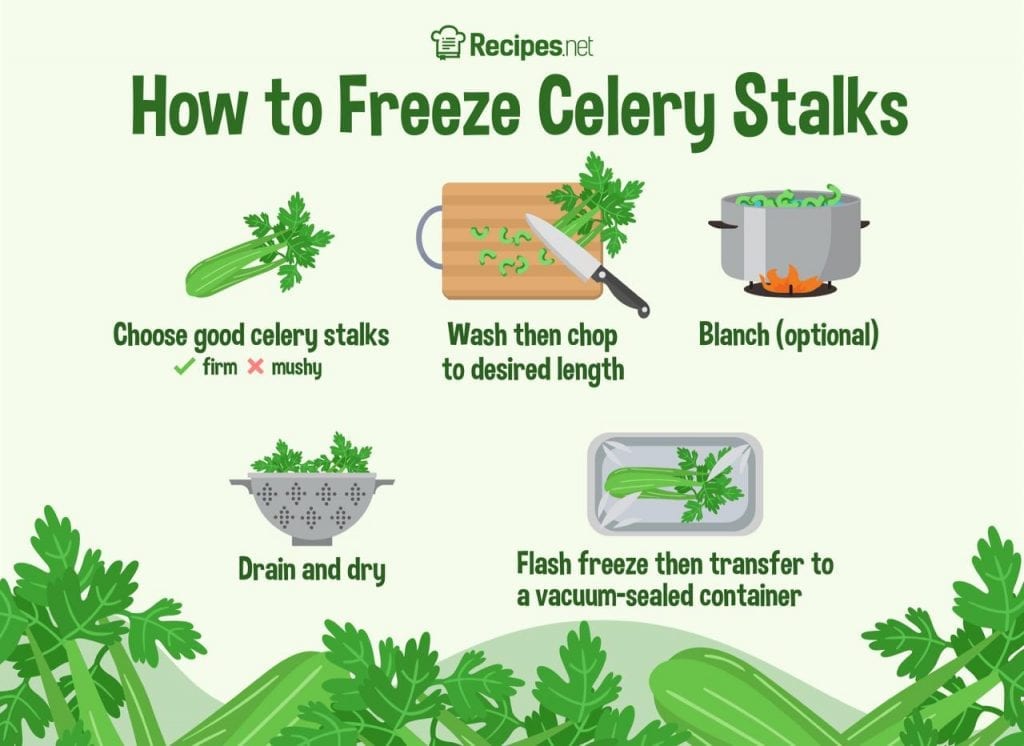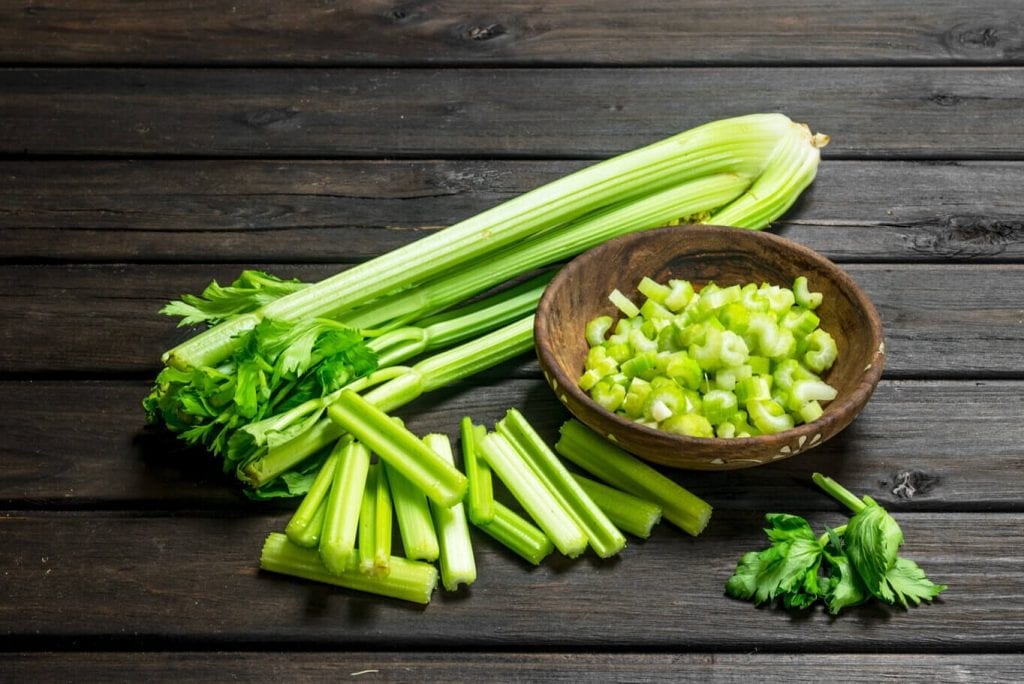
Celery is a common vegetable found in many dishes, like this delightful apple celery salad. Because of its versatility and earthy flavor, people may tend to overbuy this vegetable. This leads to spare celery rotting and, unfortunately, being thrown away. This situation now raises a question: can you freeze celery?
Absolutely! You can even freeze its leaves and sticks separately. In fact, this is the best way to store celery if you really want to extend its shelf life. Continue reading to learn how to do this, and more!
Pros and Cons of Freezing Celery
The most obvious benefit of knowing how to freeze celery is it extends the vegetable’s shelf life substantially. This neat trick will come in really handy, especially if you don’t see yourself using the vegetable any time soon.
But note that celery has high water content. Just like other frozen vegetables, this turns the celery soft when frozen. The stalks can become limp and they can lose much of their flavor. Because of this, it is best not to use frozen celery for recipes that require fresh ingredients. Some of the best dishes you can make with it include stews, soups, pasta, smoothies, as well as stuffing and stock. You’re more than welcome to use it for healthy veggie juice, too!
How to Freeze Celery for Later Use
Freezing Celery Stalks
Celery stalks refer to a bunch of whole celery plants. If you have some extra ones you want to preserve, then here are a few steps for freezing your celery stalks:
- Choose good celery stalks. Stalks that are firm and crisp tend to freeze better. Don’t freeze stalks that are already mushy.
- Wash the celery stalks. They can be cleaned thoroughly by running them under cold water. Use a knife to trim the base of the stalks that might be hanging or discolored.
- Chop the celery stalks to your desired length. It’s going to be difficult if you chop them after freezing.
- Blanch the chopped celery. Do this by putting it in boiling water for three minutes. Stir the water so all pieces of the celery will be submerged. After boiling, transfer the celery to a bowl of cold water and let it sit for three minutes.
Note: Blanching is optional. You can always skip this step if you’re going to use the veggies within a few months. But if you wish to store your celery for longer, then blanching is a must.
- Drain and dry the celery. Be sure that it is completely dry. Excess fluids can ruin the celery’s quality when frozen.
- Flash freeze. Put the chopped pieces on a tray or baking sheet lined with baking paper. After that, let it sit in the freezer for a couple of hours.
- Transfer the frozen celery to a vacuum-sealed container. Be sure to use air-tight plastic freezer bags. You can also vacuum-seal the celery in freezer pouches. If you’re freezing other vegetables, it’s a good practice to label them with the date they’re first frozen so you can keep track of their shelf life.
READ ALSO: Can You Freeze Mushrooms? Yes, Both Raw & Cooked!
Freezing Celery Leaves
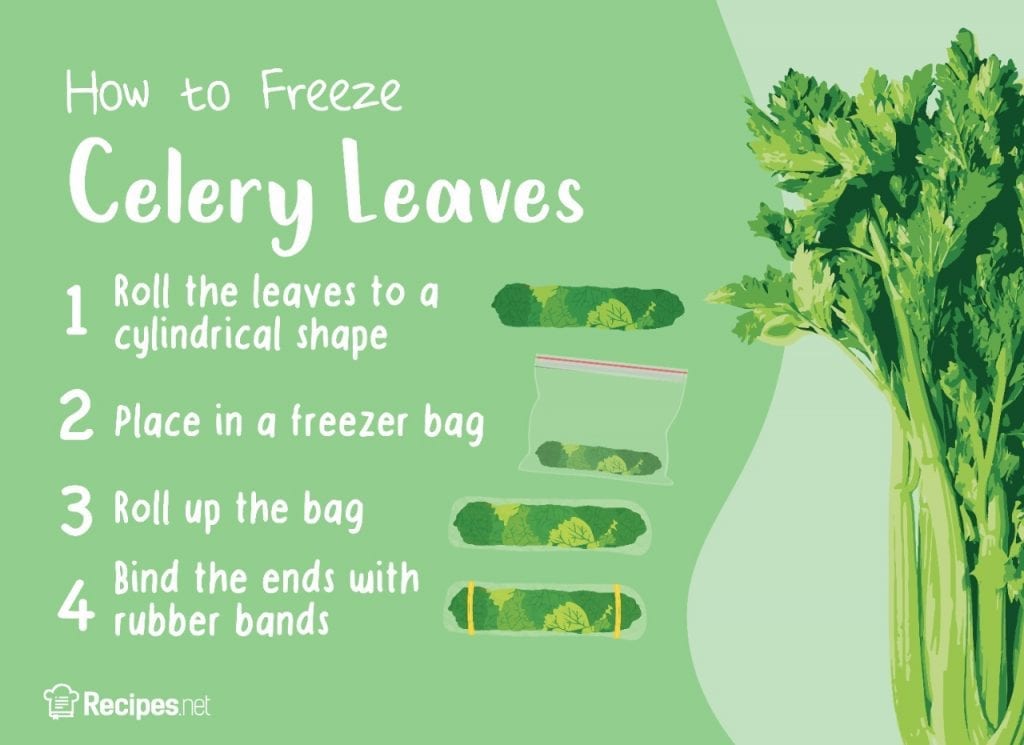
You can also freeze celery leaves if you don’t plan on preserving the whole stalk.
- Roll the leaves into a cylindrical shape.
- Place the rolled leaves in a freezer bag. Make sure the leaves fit perfectly at the base of the bag.
- Roll the bag firmly then secure the ends with rubber bands.
When you’re ready to use the leaves, remove them from the bag and then simply slice off the amount you need. Don’t forget to put the extra ones back before storing in the freezer.
Freezing Celery Sticks or Ribs
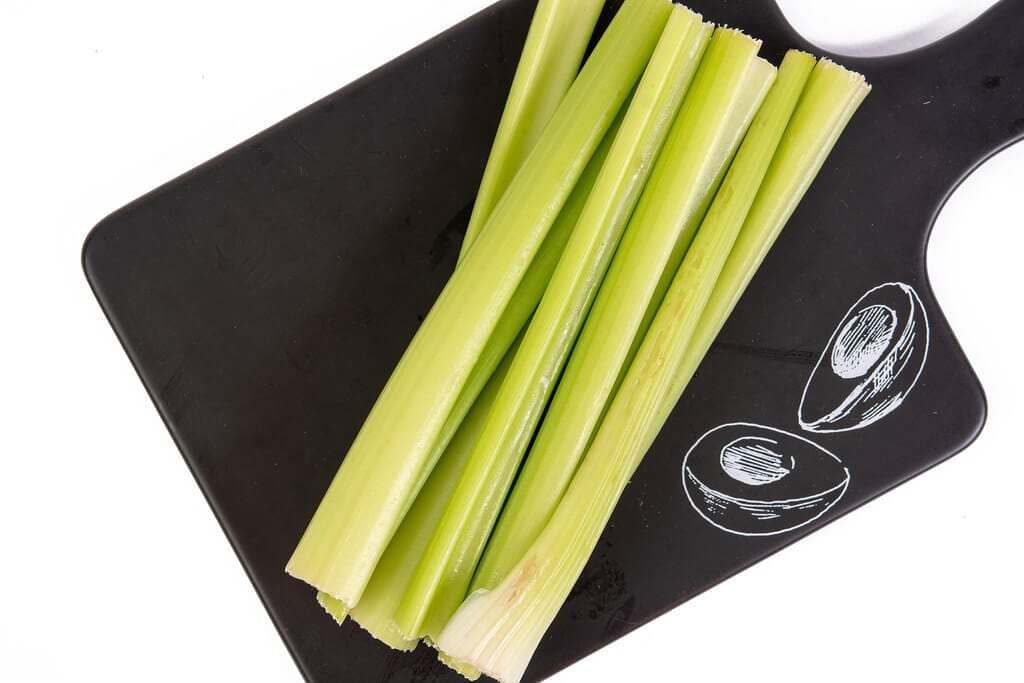
Celery sticks are different from celery stalks. Sticks, also known as ribs, are not bound together by the plant’s root. It’s the single “stick”, and also what remains when you cut off the plant’s leaves.
Maybe you bought a whole stalk to make a mushroom and celery salad, and you didn’t get to use all of the sticks. It would be a waste to dispose of the excess celery ribs. So instead of throwing them away, preserve them instead.
Here are the steps to freezing celery sticks:
- Chop the sticks into smaller pieces.
- Put all the pieces in a freezer bag.
You can now use your frozen sticks for recipes like chicken noodle soup, for example. There’s no need to thaw them out, since they do contain a substantial amount of water. When you’re done cooking, put the unused ones back in the freezer bag and store it again in the freezer.
To Blanch Or Not To Blanch
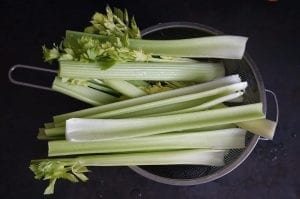
Blanching will surely extend your celery’s life in the freezer and make it last longer. All you need is some boiling water and a bowl of cold water for this process. Additionally, this method helps preserve the celery’s flavor, texture, and color.
However, if you didn’t blanch your celery, it can still be preserved in the freezer. But while this option doesn’t require boiling water and cold water, your celery won’t be preserved for as long. You may also lose more of the celery’s texture, color, and flavor.
How Long Does Celery Last?

Generally, fresh whole celery lasts for three to four weeks while a package lasts for two to three days. On the other hand, cooked celery can last for a week.
However, if you freeze raw celery, its shelf life will extend. Without blanching, celery can be preserved for up to two months. If you blanched it before freezing, you can keep it in storage for as long as 18 months.
How to Tell if Celery is Bad
If the celery in your freezer has turned soft and can easily bend (compared to regular celery that’s firm when fresh), then this means that it’s almost rotten. If it has a pale color and the middle part is hollowed out, then you might want to consider throwing your celery. These characteristics indicate that the celery is now old and no longer good for consumption.
So You Can Freeze Celery, But It Will Lose Its Crispness.
Can you freeze celery? Yes, you can! If you overbought a lot of celery, you can always just preserve it in the freezer to extend its shelf life. However, keep in mind that this method causes it to lose its natural crisp. But no worries! Due to its versatility, you can still use frozen celery to make the tastiest dishes for your friends and family.
Was this page helpful?
Read Next: What Is Beef Tripe and How to Clean It
